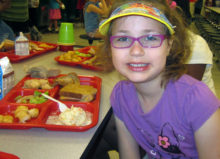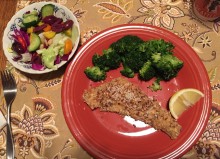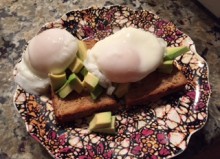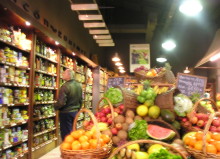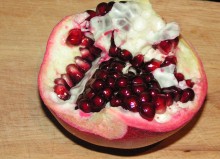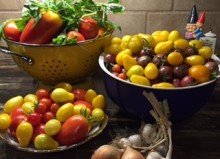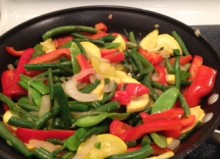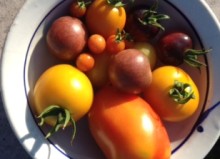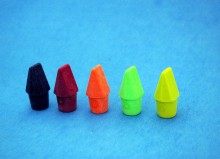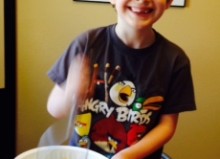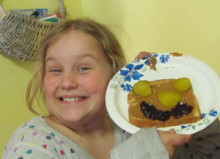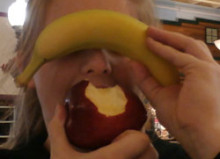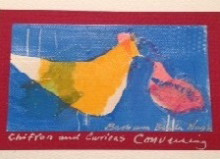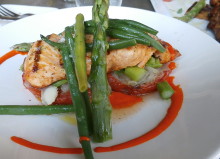Children and Veggies: Two Peas in a Pod
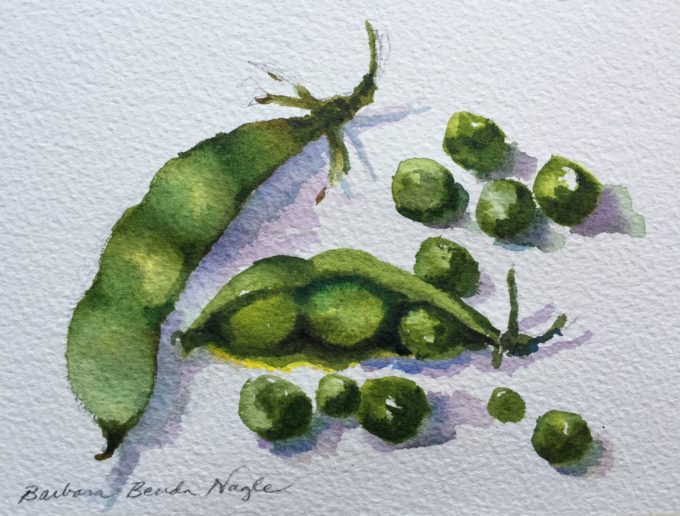
The other night as I was picking peas in my garden, I was blessed by two visitors: my neighbor and her 2-year old daughter Renee.
I squatted down, opened up a pea pod, and showed Renee the big green balls inside. She looked at me strangely, not sure what to do. So I pulled out a pea and popped one in my mouth. She laughed, and then tried to pull one out for herself. She finally grabbed one and slowly inched it up to her lips. Then she ate it.
She liked it.
More.
More!
I was happy to oblige while her mother reminded her to say “please.”
I asked Renee, “Do you know what this is? Pea. Can you say ‘pea’?”
“No,” she said firmly, “Candy!”
And she kept eating the “candy.”
While we know that “Kids say the darnedest things!” we also know they are wise beyond their years.
While Renee was enjoying her peas, her mom and I smiled, but didn’t say much else. You see, the less parents say about food, the better. Children are the smartest eaters. Unlike adults, they eat when hungry, and stop when full. They are hard to talk into eating when their tummies say “no.” They don’t eat for emotional reasons or because the clock strikes noon or because it’s time for cake at a party. Over time, adults will teach them to do that.
For now, they like to eat according to their bodies’ needs. “She’s eating like a horse,” her dad might say. Actually, she is eating like a little girl who is having a growth spurt. Saying “she eats like a horse” could embarrass her. “This baby is nursing non-stop – what is going on?” Again, it’s a growth spurt, and when the baby wants to grow, the baby will nurse more. There’s nothing wrong – it means everything is going great, so keep on breastfeeding! Children are self-regulating – asking for more food when growing and refusing when on a plateau. If we honor that, they will fall into a natural, healthy weight. If we push them to eat more, we are steering them outside that healthy weight.
Pushing children to eat “because it’s good for you” or “because it is healthy” are usually ineffective tactics. Making children clean their plates or eat foods they don’t like rarely work to get children to like the food, and often result in tears and resentment. Praising children also sabotages children’s natural inclination to self-regulate. “Eat your veggies and you get dessert” is a ploy that tells children that sweets are better than vegetables. Not fair, and it encourages children to eat for reasons other than hunger.
The best approach is the Division of Responsibility guideline designed by Ellyn Satter, child nutrition expert. You provide the food in a pleasant atmosphere and it is up to the child to decide what and how much to eat.
In summary, the less you say, the better. Renee made this very clear. She took off once she tried her first pea. Those peas were delicious, packaged so nice in that plump green package. So sweet they were, she called them candy. We didn’t say a word.
I’m looking forward to having little Renee visit when my cherry tomatoes ripen!
If you struggle with children not eating vegetables, if your children are what you call “picky eaters” who want a short order cook, or if family meals are simply chaotic at your house (or nonexistent), please contact me. With over 20 years of maternal child health experience, I am happy to assist you, and help you find the best solution for your family! I’m just an email away at [email protected]
Summer Peas Watercolor by Barbara Benda Nagle © used with permission by artist.

